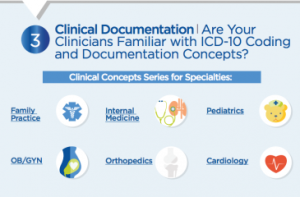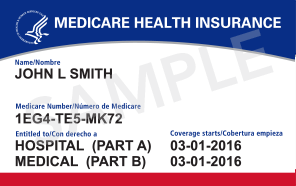
Written by Eileen Dano Tkacik | Monday, 20 June 2016 20:00
A recent data set gathered from 300 coders at 50 health systems was revealing with regard to ICD-10 coding accuracy thus far following the October 2015 implementation. The data exposed both good news and bad news for health information management (HIM) directors and coding managers.
The good news is that coding accuracy is increasing slightly after eight months under ICD-10. But conversely, coding accuracy is nowhere near the 95-percent standards long ago established under ICD-9. So while accuracy ratchets up, the data demonstrates that many coding quality issues continue to persist.
Measuring ICD-10 Quality Thus Far
Our coding accuracy data was compiled from 300 coders using Central Learning, a Web-based coder assessment tool, and it includes input from experienced coders as well as coders-in-training. Fifty health systems are represented in the data, providing a broad-based assessment. We compared coder accuracy from the first quarter of 2016 (Jan. 1-March 31) to midway thru the second quarter (April 1 to May 27) to identify recent, timely trends in coder accuracy. Here is the most current benchmark of where we stand midway through the second quarter, as compared to the first.

As you can see, there has been an upward trend in coding accuracy, and we expect this to continue. Actively monitoring code quality, either through monthly coding audits or automated coder knowledge assessments, is critical to mitigate coding denials and revenue recoupment, as payor denials and recovery audits are expected to increase.
Five Areas of Coding Accuracy Concern
Digging deeper into the data from the first quarter, we pinpointed five areas in which coding accuracy remained well below acceptable levels (ranging between 51.1 and 66.1 percent accuracy). With Central Learning, we were able to identify specific coders and coding teams that produced these areas of poor performance, and we subsequently implemented focused training efforts. Follow-up performance measurements revealed marked improvement in one specific category, S00-T88, Injury, poisoning, and other external causes, as reflected below.
The bottom five coding accuracy categories included:

As coders grow and mature in their knowledge and experience with ICD-10, we expect a continual improvement in coding accuracy in these problem areas.
The findings presented above establish a baseline for ICD-10 coding accuracy while also flagging specific areas of coding concern. They can be used as a first step to develop follow-up performance measures for coding teams, coding audits, and coding compliance programs nationwide.
How to Use Coding Quality Data
Begin by identifying your coding team’s top five most and least accurate code categories during coding audits or coder knowledge assessments. Once you’ve identified these categories, use your data to answer these five important questions:
- How accurate is the code assignment methodology utilized for high-risk service lines within these code categories?
- What are the specific coder knowledge gaps by diagnosis, procedure, and coder?
- Is clinical documentation accurate, complete, and as specific as possible?
- Are payors paying high-risk service lines correctly?
- How much revenue, if any, is being lost due to incorrect coding?
The true relevance of coder accuracy is demonstrated by also measuring revenue impact.
Correlation Between Coding and Revenue Stream
The extent to which a hospital’s coding staff assigns codes appropriately results in differences in diagnosis-related groups (DRGs) and reimbursement. These differences need to be scrutinized to determine if a change in DRG is correct or the result of a coding error. For example, injury codes in ICD-10 require a seventh character that identifies the nature of the encounter (i.e., initial, subsequent, or sequela). The assignment of the same injury code with a different seventh character (i.e., initial vs. subsequent) can result in differences in MS-DRG assignment, which has a significant impact on reimbursement.
We have a long way to go, as an industry, to reach the 95-percent accuracy threshold established over decades of ICD-9 coding. Achieving accurate coder accuracy measurement and performing analysis of coding data are the first steps to making this transition.
Questions about ICD-10 codes and reimbursement? Physician Credentialing and Revalidation ? or other changes in Medicare, Commercial Insurance, and Medicaid billing, credentialing and payments? Call the Firm Services at 512-243-6844 or [email protected]


